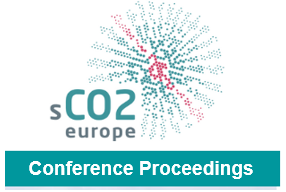Part load analysis of a constant inventory supercritical CO2 power plant for waste heat recovery in cement industry
The present work investigates the part-load performance of a MW-scale sCO2 power plant designed as heat recovery unit for an existing cement plant located in Czech Republic, in the framework of the H2020 funded project CO2OLHEAT. The study firstly presents the selected power plant configuration and then focuses on the evaluation of its part load operation due to variation of flue gas mass flow rate and temperature. The range of flue gas conditions at the outlet of the upstream process is retrieved from a preliminary statistical analysis of historical trends obtained through the cement plant monitoring. The numerical model developed for this study aims at providing realistic results thanks to the adoption of turbomachinery performance maps provided by the project partners. Moreover, heat exchangers have been modelled through a discretized approach which has been validated against manufacturer data, while piping inventory and pressure losses have been assessed through a preliminary sizing that considers the actual distances to be covered in the cement plant. Performance decay is estimated for the whole range of flue gas conditions, reporting the most significant power cycle parameters, and identifying the main causes of efficiency loss. The part-load analysis is carried out considering a constant CO2 inventory, in order to reduce the system complexity and capital cost and simplify plant operation. Results show that the operation entails minor variation of the compressors operative points in the whole range of operating conditions of the cement plant, avoiding the risk of anti-surge bypass activation. Moreover, the plant is able to work at nearly constant thermodynamic cycle efficiency (20.5%-23.0%) for most of the year and benefits from part-load operation in terms of overall performance. These predictions will be used, in next steps of the project, to guide the definition of power plant control during transients related to changes of upstream process conditions or specific needs of power output control
Vorschau

Zitieren
Zitierform:
Alfani, Dario et al. (2023): Part load analysis of a constant inventory supercritical CO2 power plant for waste heat recovery in cement industry. In: 5th European sCO2 Conference for Energy Systems: March 14-16, 2023, Prague, Czech Republic. S. 179–185. Online unter: https://nbn-resolving.org/urn:nbn:de:hbz:465-20230427-133140-9.
Zitierform konnte nicht geladen werden.
Rechte
Nutzung und Vervielfältigung:
Dieses Werk kann unter einer Creative Commons Namensnennung 4.0 Lizenz (CC BY 4.0)
Creative Commons Namensnennung 4.0 Lizenz (CC BY 4.0)
genutzt werden.
